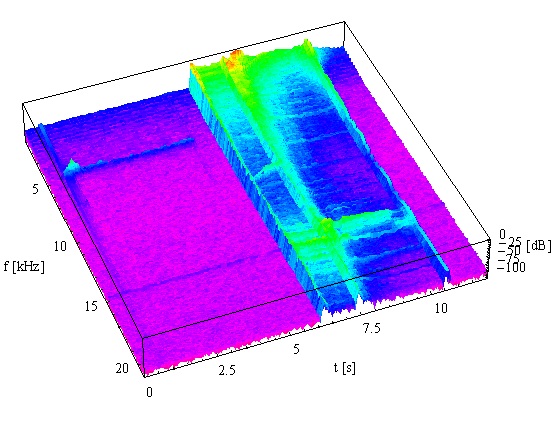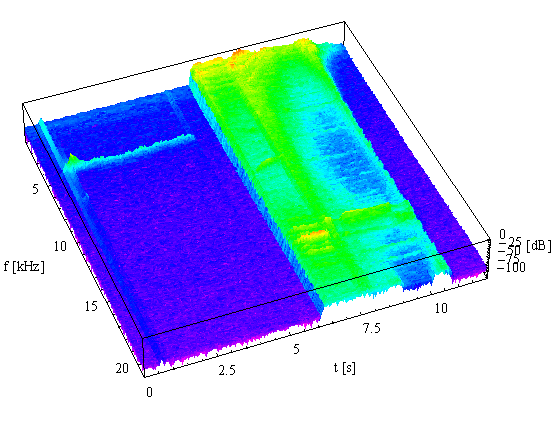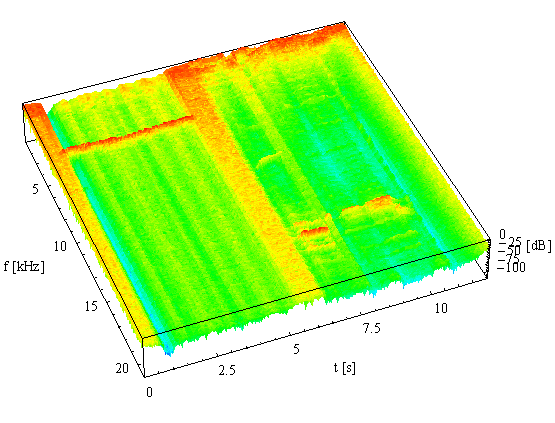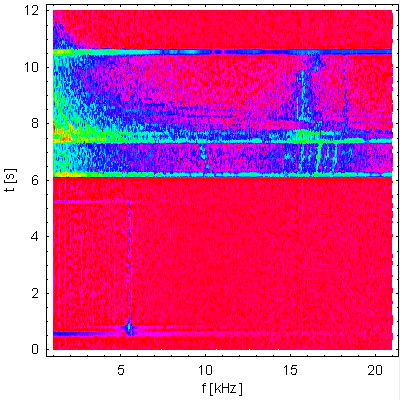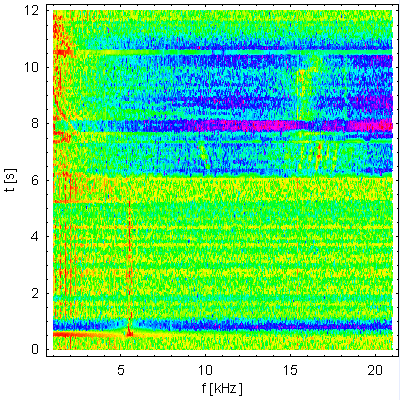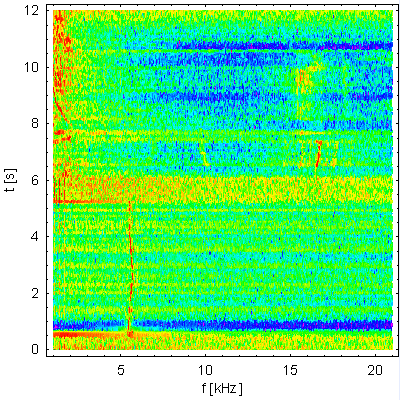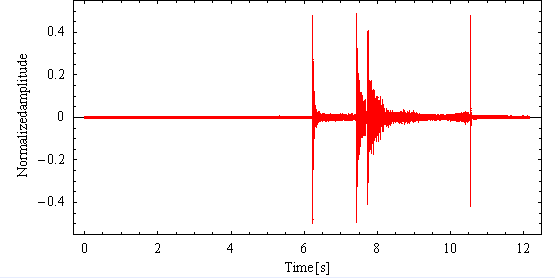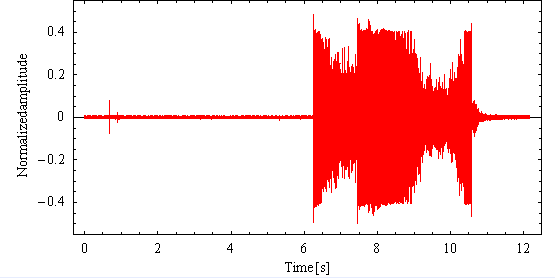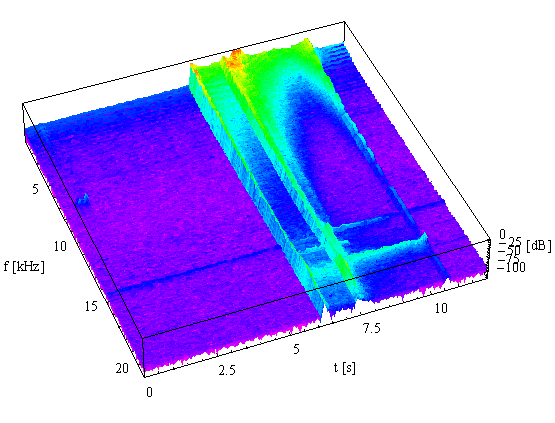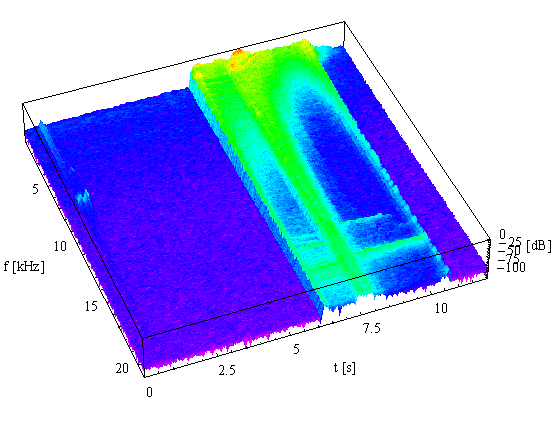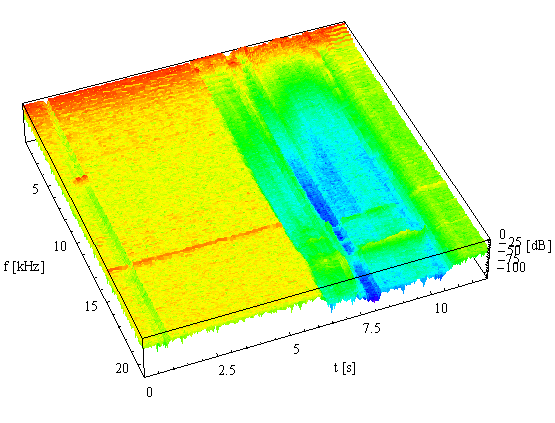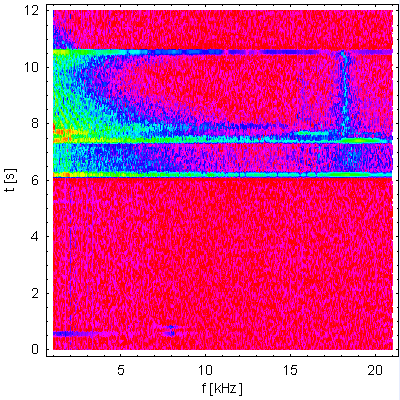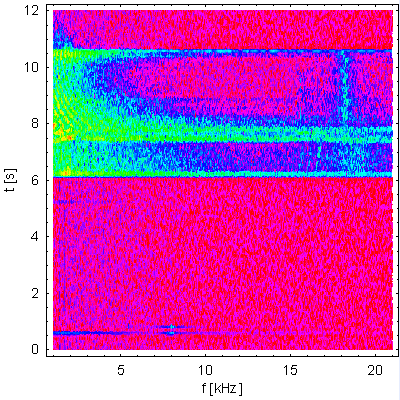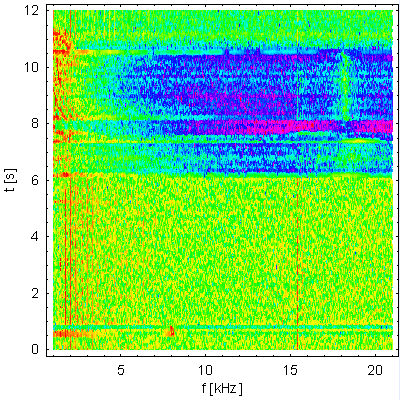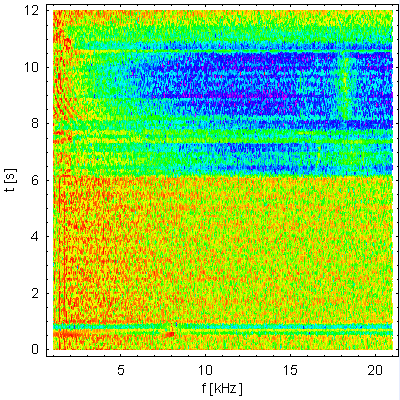Below are links to the WAV files. In the first record done with the 30dB gain you can hear the LI beam only with headphones. In the second one, done with the 75dB gain, you can hear clearly the LI beam. Saturation effects on the HI beam lead to heavy sound distortions. Nevertheless, the corresponding spectra still carry the betatron frequency information. The most important conclusion is that the BBQ concept is very robust for saturations. The other is that with 16-bit acquisition system one can clearly see even very small components.
- small gain (35dB), L channel - H plane, R channel - V plane, ca 4.5MB, 13s, 16-bit, 96kS/s.
- larger gain (75dB), L channel - H plane, R channel - V plane, ca 4.5MB, 13s, 16-bit, 96kS/s.
Below are time domain signals. The LI beam is not seen on the small gain measurement. The HI beam signal is clamped in the front-end during most of the higher gain measurement.
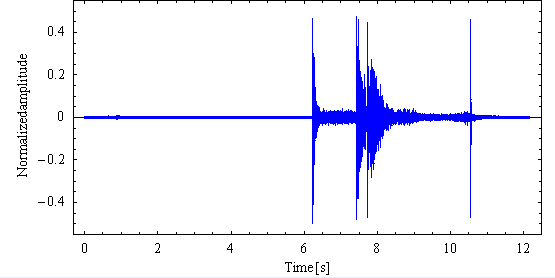
Fig. 1a. H plane time domain signal, small gain.
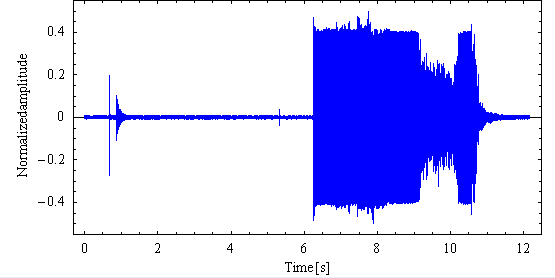
Fig. 1b. H plane time domain signal, large gain.
